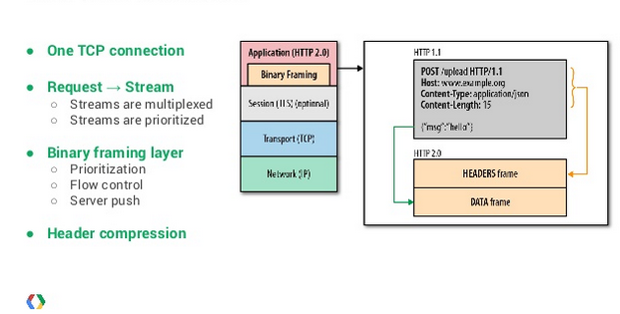When the last version of the Hypertext Transfer Protocol 1.1 (HTTP/1.1) was approved in 1999, fast computers were running 500MHz Pentium III chips, Bill Clinton was president of the United States, and software engineers were working hard at fixing the Y2K bug. As for the internet, the US Federal Communications Commission defined broadband as 200 kilobits per second (Kbps), and most users connected to it with 56Kbps modems. Things have changed, and HTTP, the web's fundamental protocol, is finally changing with the times, too.
HTTP/2 in one box. --Google
After more than two years of consideration, the Internet Engineering Task Force (IETF) has finally approved HTTP/2. HTTP/2 is made up of two specifications: The new protocol itself, and HPACK, which provides header compression for HTTP/2. This revised protocol "will help provide faster user experience for browsing, reduce the amount of bandwidth required, and make the use of secure connections easier".
HTTP/2 is based in part on an earlier protocol called SPDY (pronounced speedy) from Google, and takes most of its speed improvements from it. There was never a competition between the two; SPDY is HTTP/2's father, not its rival.
The first way HTTP/2 speeds up traffic is by transferring all data as a binary format instead of HTTP 1.1's four text message styles. Besides making it simpler for web servers and browsers, this new format is more compact, because the more compact a web page is, the less time it takes to be transmitted.
HTTP/2 uses multiplexing. This makes for a more responsive website by avoiding HTTP 1.1's "head-of-line blocking" problem.
Read more: How HTTP/2 will speed up your web browsing

